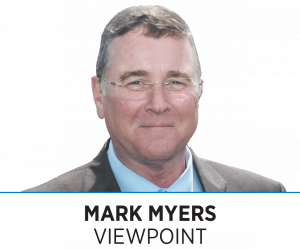Subscriber Benefit
As a subscriber you can listen to articles at work, in the car, or while you work out. Subscribe Now As the Indiana General Assembly considers changes to the state’s property tax system, it is imperative to approach the task with precision and care.
As the Indiana General Assembly considers changes to the state’s property tax system, it is imperative to approach the task with precision and care.
Municipal leaders, like state lawmakers, are acutely aware of the challenges facing residents who struggle to meet their tax obligations. We stand united in our belief that legitimate hardships should be addressed with effective programs and safeguards. However, any reform must be conducted in a manner that supports Indiana’s growth and stability rather than undermining it by not having frontline practitioners at the table for this debate.
Much has been said about the recent rise in assessed property values and the corresponding increase in property taxes. Under our constitutionally mandated market-based assessment system, this fluctuation was expected. The system is designed to mirror the real estate market’s ebbs and flows, capping the residential tax burden at 1% of the home’s assessed value. This cap is a vital safeguard for homeowners. But it doesn’t mean the system is perfect, and it doesn’t mean one’s property taxes are frozen in time.
Discussions about government reforms are healthy. But reforms to a system that was carefully crafted by lawmakers and overwhelmingly approved by Hoosiers must be approached strategically. It’s crucial to remember that, in most Hoosier communities, property taxes make up the largest revenue source. And in nearly all cities and towns, 50% of this property tax revenue is earmarked for public safety. This includes funding for police officers, public safety employees, equipment, vehicles and emergency medical services.
Funding municipalities adequately is about ensuring that Indiana’s cities and towns can thrive. The quality of life in our communities depends on our ability to invest in not only essential services and infrastructure but also parks, trails, sidewalks and more. This investment is critical to attracting new Hoosiers and keeping existing Indiana residents right here at home.
It’s also important to consider that 70% of Hoosiers live in a city or town. Any changes to the property tax system that do not account for this fact could have unintended consequences, potentially stifling Indiana’s potential for population and economic growth.
City and town officials are problem-solvers by nature. We seek solutions that balance the needs of our communities with the realities of our residents. Broad, sweeping changes could create chaos. But here are some key areas where a thoughtful, surgical approach could make a meaningful difference.
Maximum levy growth quotient: The formula, which determines how much property tax levies can grow, should be reviewed. A good start would be a levy growth quotient that aligns with inflation and allows growing communities to expand their levies as needed without leaving slower-growing units with inadequate funding. Adjustments to this formula could ensure that property tax revenue keeps pace with the demands of growing populations without unfairly burdening taxpayers.
Local revenue-raising authority: Municipalities need greater fiscal flexibility. Municipal officials are in the best position to know the revenue sources most relevant for their local or regional demographics, including their residential, retail and corporate makeup. Not allowing municipal leaders to make these decisions without relying on the approval of other state or county legislative bodies undermines local elections and local leaders.
Targeted relief for vulnerable homeowners: We must gather data on whether existing property tax relief programs for at-risk seniors are adequate, particularly in rapidly growing communities. A mechanism for hardship property tax relief should be a key component of any relief package considered, rather than expanding broad-brushed exemptions.
Exploring these targeted reforms could alleviate the burden on struggling taxpayers without causing widespread harm to the cities and towns that rely on property tax revenue. This approach is not about imposing arbitrary cuts but about working collaboratively to identify those most in need and ensuring they receive the assistance they deserve.
Indiana’s future depends on thoughtful, deliberate action. By working together, lawmakers and municipal leaders can craft a property tax system that is fair, effective and conducive to the continued growth and prosperity of our state.•
__________
Myers is mayor of Greenwood and president of Aim, an association for Indiana cities and towns.
Please enable JavaScript to view this content.
